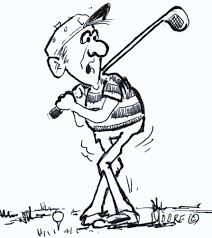Article by Megan Dunphy
Pilates is well known for improving lumbopelvic stability, however there are more benefits to Pilates than simply improving your core strength. Pilates also improves your mobility and control, improving your performance in rotational sports, such as golf.
 Approximately 60% of golfers experience some type of injury while playing golf, with the majority resulting from overuse. From a biomechanical perspective, the golf swing is a complex movement that loads the whole body with asymmetrical, multidirectional stresses. The repeated action of swinging a club can lead to muscle imbalances in the trunk, hips, arms, and shoulder, ultimately affecting performance and potentially resulting in injury.
Approximately 60% of golfers experience some type of injury while playing golf, with the majority resulting from overuse. From a biomechanical perspective, the golf swing is a complex movement that loads the whole body with asymmetrical, multidirectional stresses. The repeated action of swinging a club can lead to muscle imbalances in the trunk, hips, arms, and shoulder, ultimately affecting performance and potentially resulting in injury.
Golf technique correlates to physical limitations, such as lack of flexibility, poor rotation, hip instability, general hip or leg weakness, shoulder girdle instability, weakness in the wrists and forearms and poor core strength. Simply correcting the swing technique does not address the underlying physical cause or impairment. The underlying limitations need to be addressed at their physical source before compensations to technique are made. The body then needs to be retrained in order to improve the motor control of the swing, preventing injury and improving overall performance. When looking to improve your golf swing, or decrease your risk of injury it is important to address areas of vulnerability or individual impairments specific to you. For this reason, many golfers, including Tiger Woods, are now using Pilates to train their bodies and improve performance.
Pilates is based on movement from the center of the body, as are most shots in golf. It strengthens the center of the body, also known as the core. Core strength can improve hip rotation, range of motion in the shoulders and back stability leading to more powerful and accurate golf shots. Pilates exercises can improve swing mechanics by improving foot and leg alignment, core strength, joint range of motion, spinal flexibility, shoulder and hip rotation, and arm, wrist, and hand strength. A golfer’s swing is dependent on the transfer of load from each body segment into the club. Pilates can help lengthen tight muscles and strengthen weaker muscles, assisting in fine-tuning the balance between mobility and stability required for golf.
golf. It strengthens the center of the body, also known as the core. Core strength can improve hip rotation, range of motion in the shoulders and back stability leading to more powerful and accurate golf shots. Pilates exercises can improve swing mechanics by improving foot and leg alignment, core strength, joint range of motion, spinal flexibility, shoulder and hip rotation, and arm, wrist, and hand strength. A golfer’s swing is dependent on the transfer of load from each body segment into the club. Pilates can help lengthen tight muscles and strengthen weaker muscles, assisting in fine-tuning the balance between mobility and stability required for golf.
Pilates spinal rotation exercises build core and back muscles evenly, de-rotating the spinal imbalance. Awareness of standing alignment elongates and aligns the spine. Concentrating on foot placement and weight-shift improves balance and stabilizes the base of support. Addressing physical limitations through a series of Pilates exercises can help create symmetry and coordination, improve muscular endurance and increase range of motion. The end result is a flexible, symmetrical body strengthened from the inside out.
Both golf and Pilates are mind-body activities that share some of the same basic principles: fluid motion, precision, control, accuracy, power, and proper breathing. Similar to golf, Pilates involves whole-body movement integration with conscious control.
Overall, Pilates exercises help improve muscle imbalances, flexibility, core strength, and spine mechanics. Specific to golf, Pilates will stretch, strengthen and rotate your body. Pilates will benefit both stability and mobility, which once optimized will result in good motor programming. Over time, the golfer’s body mechanics will improve, creating new movement patterns for golf, which will ultimately decrease the risk of injury and improve your swing.
Join us at In Balance for a Pilates session focused on rotation, flexibility, and core strength to better your golf swing.

